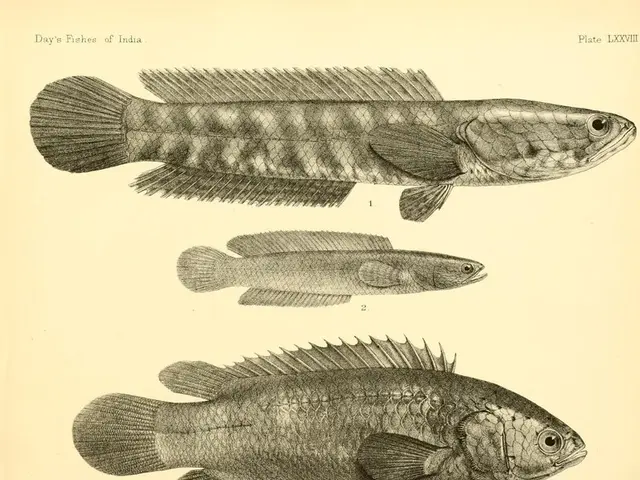Guide for Maintaining Orchids: Essential Tips and Techniques
Orchids, particularly Moth Orchids (Phalaenopsis), are popular choices for indoor planting. Their appealing displays can grace any houseplant arrangement, thriving for extended periods and available in a variety of flower colors.
The popularity of Moth Orchids has paved the way for other orchid species becoming accessible for indoor cultivation. These include Dendrobium orchids, Paphiopedilum orchids, Oncidium orchids, Vanda orchids, and Cambria hybrid orchids. Caring for these species is relatively simple and adapted for most households, resulting in captivating arrangements of exotic blooms.
Proper Orchid Care
Watering
Moth Orchids exhibit changing root colors, indicating their moisture levels. Green roots denote hydration, requiring no watering, while silver roots indicate dryness and should be watered. Always check the roots before watering and ensure the use of lukewarm water to prevent shocking the plant.
For other types of orchids, such as Cambria/Odontoglossum, Cattleya, Cymbidium, Dendrobium, Miltonia and Oncidium, monitoring their weight is a practical approach for determining watering schedules. If the leaves and stems become heavier than the growing medium, it is an ideal time to water.
For sensitive orchids like Paphiopedilum or Phragmipedium, rainwater or filtered water is recommended, as they can be susceptible to tap water.
Methods of Watering
Orchids may be watered by either submersion or from the top.
Submersion involves placing the bottom quarter of the plant's pot into lukewarm water for around an hour. It is possible to add orchid fertilizer to the water, which the roots will absorb during this process. After an hour, lift the pot out of the water, allow it to drain, and place it back in its usual spot.
Watering from the top is a quicker method, less likely to lead to root rot. However, it will require more frequent watering compared to submersion. Always ensure the pot drains completely and never leave the orchid sitting in water.
Vanda orchids do not grow in compost but rather in loose roots in the air. To water them, simply submerge the rootball in lukewarm water for a couple of hours.
Lighting
Most orchids require bright yet indirect light, as direct sunlight can scorch their leaves. During spring to autumn, it is recommended to place them on an east- or west-facing windowsill. During winter months, when light levels are lower, move your orchid to a south-facing windowsill.
Orchids originate from humid, tropical regions, therefore, a humid atmosphere is desirable. In most centrally heated homes, the air is dry, so mist the foliage every two to three days using tepid water. Avoid spraying the flowers, and instead, stand the pot on a tray of damp gravel to maintain humidity.
Various orchid species require slightly different care, so retaining the plant label after purchase may be beneficial. However, generally, grow orchids using specialist orchid compost, avoid overwatering, and use orchid fertilizer from the spring until the autumn.
Compost
Moth Orchids, Cambria/Odontoglossum, Cattleya, Cymbidium, Dendrobium, Oncidium, Vanilla and Zygopetalum orchids require proper air circulation around their roots for optimized growth. Often, pine bark is used as the ideal growth medium due to its porous and well-draining properties. Use a larger grade (8-15mm) for moth orchids and cymbidiums, and a finer grade (5-8mm) for other species. Finer grade orchid bark is typically available from specialist suppliers.
Other orchids like Phragmipedium and Paphiopedilum require a homemade mix of coconut coir, bark, perlite, and sphagnum moss (ratios of 1:1:0.5:0.5).
Vanda orchids do not require compost as they are grown epiphytes or air plants.
Fertilizers
Orchids have less dependence on fertilization compared to other houseplants. Use a specific orchid fertilizer only, available in spray form for easy application and nutrient absorption through the leaves.
Temperature and Humidity
Orchids thrive under normal household temperatures of around 15°C - 30°C. Humidity is usually maintained naturally but avoid keeping them near operating radiators. If necessary, mist the leaves every few days to augment humidity levels.
Pruning
Remove spent flowers as they start to yellow, using a clean pair of scissors. Avoid pruning off yellowing leaves that still have plumpness, as the orchid will be transferring nutrients into other areas of the plant. Once the final flower has dropped from the stalk, cut the stalk back by half to encourage a new branch of flowers.
For orchids with small pseudobulbs at their base, such as Cymbidium, Cambria, Miltonia, Miltoniopsis, Oncidium and Zygopetalum, do not cut off any yellowed or browned bulbs, as they store valuable nutrients and moisture for the plant.
Staking
Orchids are frequently supplied with vertically upright canes to support their flowers. Although they will continue to flower upright, staking is not strictly necessary, as the flowers naturally hang freely in nature. It is ultimately up to you if you prefer upright flower stalks or those that hang pendulously.
Repotting Orchids
Most orchids require repotting every three to four years, into the next sized transparent pot, using orchid compost. For specialist orchids, such as Paphiopedilum and Phragmipedium, a homemade mix of coconut coir, bark, perlite, and sphagnum moss is ideal (ratios of 1:1:0.5:0.5). For jewel orchids, use either sphagnum moss or a homemade mix of coconut coir, perlite, and bark (ratios of 1:1:1).
- Soak the plant thoroughly 12 hours before repotting to reduce transplant shock.
- Carefully remove the orchid from its pot and gently shake the root system to remove loose bark. Healthy roots that are still attached to fused bark pieces should be retained, as their removal could damage the root. Remove any brown or softened roots using clean scissors.
- Fill the bottom fifth of the new pot with orchid compost and then place the rootball on top, ensuring the leaves will sit proud of the top. Fill around the roots with more bark and tap the pot to remove air pockets. Water and allow to drain.
Propagating Orchids
Phalaenopsis (Moth Orchids)
Moth orchids can be propagated from small offshoots that grow from the flower stalk. These require at least three leaves and a root longer than 5cm. It might take three years for moth orchids to produce offshoots, so be patient. If yours has one, cut the flower stalk connecting the orchid 3cm above and below the offshoot. Fill the bottom quarter of a 7cm clear orchid pot with fresh orchid compost, then place the offshoot's roots on top. Add more bark around the roots, tap the sides of the pot to remove air pockets, and place the offshoot on a bright, sunless windowsill. Water the offshoot once a week.
Dendrobium
Dendrobium can be split at the base where multiple stems are fused, or by offshoots that develop along the stems themselves. Use a clean knife to split the chosen stem from the base, which should have at least three healthy leaves attached. Tease the cutting's roots from the rest of the rootball and repot it in a 7cm pot of orchid compost. Keep the cutting on a bright, sunless windowsill and water regularly.
Bulbophyllum, Cambria/Odontoglossum, Cattleya, Cymbidium, Dendrobium, Epidendrum, Oncidium, Zygopetalum
Propagate these orchids by dividing mature pseudobulbs at their base. Use a clean knife to make the split, and pot into a 10cm transparent pot filled with orchid bark. Keep on a bright, sunless windowsill, and water regularly while the cutting develops roots.
Vanilla Orchids
Take 10cm cuttings from the very tip of any stem and pot it into a 7cm pot filled with orchid bark. Keep on a warm, sunless windowsill and water regularly during the cutting's root development.
Encouraging Moth Orchids to Flower Again
With Moth Orchids, once all flowers are spent, trim the stem just above a visible joint (node). This may stimulate the growth of another flower stem, which should be clipped to a support. If no shoot appears and the original stem turns straw-colored, remove it at the base. Most other orchids won't flower twice on the same stem, so remove spent stems immediately.
Orchids are primarily grown for their flowers, so it's essential to deadhead them correctly to encourage more flowers. Moth orchids flower multiple times on one stem, so trim faded flowers just above the next flower bud. On other orchids, cut the old flower stem at the base.
Pests and Diseases
The most common orchid pests are scale insects and mealybugs. Signs of infestation include stickiness on leaves or nearby surfaces, or black sooty mold forming on infected areas. Scale insects can be found on the leaf surfaces and flower stalks, while mealybugs prefer new leaves. Remove pests manually using a soapy sponge to clean leaves, or use an insecticide.
If your orchid experiences scorching, avoid removing damaged leaves unless the plant has additional healthy leaves.
Buying Orchids
Always read the growing advice before buying. Most orchids thrive in a warm, humid environment, but some prefer cooler and drier conditions. Choose the right orchid for your growing conditions and make sure to inspect orchids for signs of disease or damage before purchasing.
Where to Buy Orchids
- Sarah Raven
- Gardens 4 You
- Crocus
- Orchids require proper care, such as watering methods that include submersion or top watering and light requirements of bright, indirect lighting.
- Many orchids, including Moth Orchids (Phalaenopsis), have specific compost requirements, like the use of pine bark or a homemade mix of coconut coir, bark, perlite, and sphagnum moss.
- Pruning spent flowers on orchids can encourage new growth, and the frequency and methods of pruning varies among species.
- Orchids can also be propagated through various methods, such as splitting Dendrobium stems or taking cuttings from Vanilla Orchids for root development.








